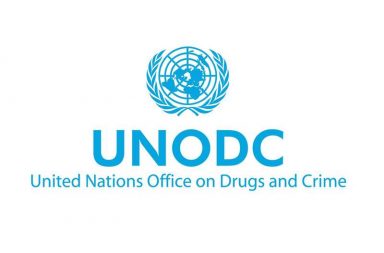This article was first published in the Law page of Daily Observer.
By Shyikh Mahdi
In a landmark judgement delivered recently, the Uttarakhand High Court of India accorded Ganga and Yamuna, two of the most sacred rivers of India the status of “living human entities”. This means that if anyone harms or pollutes either river, the law would view it as no different from harming a real person.
This verdict came just weeks after the groundbreaking event, where the New Zealand Court granted river Whanganui as a legal human person, being the first of ‘her’ kind in the world.
The recognition of Ganges and Yamuna came while the court was hearing a 2014 public interest litigation (PIL) for removing encroachments from the Shakti Canal on the Yamuna in Dehradun district. Exercising extraordinary jurisdiction vested in the Court by the constitution, a division bench of Justices Rajeev Sharma and Alok Singh of Uttarakhand High Court declared that “The holy rivers Ganga and Yamuna have been declared to be treated as living human entities.”
Furthermore, the Court appointed three officials to act as legal custodians responsible for conserving and protecting the two Indian rivers and their tributaries.
The Ganga and [the] Yamuna, all their tributaries, streams… are declared as juristic [or] legal persons [or] living entities having the status of a legal person with all corresponding rights, duties and liabilities of a living person in order to preserve and conserve river Ganga and Yamuna.
Uttarakhand High Court, India
While in New Zealand, Māori tribes wins recognition for Whanganui river as an ‘ancestor’ of Māori people after 140 long years of negotiation. The new status of the river means if someone abused or harmed it the law now sees no differentiation between harming the tribe or harming the river because they are one and the same. To put the things in motion, a financial redress of NZ$ 80 million is included in the settlement, as well as an additional NZ$ 1 million contribution towards establishing the legal framework for the river.
“Ko au te awa, Ko te awa ko au ~ I am the river and the river is me”
Māori proverb, New Zealand
While deciding the question of Right to nature, the US Supreme Court highlighted the issue in Sierra Club v. Morton, 405 U.S. 727 (1972), where in his dissenting opinion Justice William O. Douglas argued that “inanimate objects” should have standing to sue in court. Furthermore, in a monumental work of legal scholar Christopher Stone, it was argued that to achieve rights-holder status, the natural object must satisfy three criteria: [First], that the thing can institute legal actions at its behest; second, that in determining the granting of legal relief, the court must take injury to it into account; and third, that relief must run to the benefit of it.
However, the most significant development came in Ecuador when in 2008, the Govt. adopted the unique notion of ‘Right to Nature‘ in the constitution of Ecuador (articles 71 – 74). Based in this constitutional mandate, a number of lawsuits took place where some groundbreaking decisions for the conservation of the nature were surfaced.
Nevertheless, there is a growing concern among the different corners where stringent policies for environmental protection are often regarded as a barrier for trade and commercial development. Furthermore, much of the enforcement of the ecosystem rights depends on the will of the government, or a very active citizen pressure group.
The judicial activism might be symbolic, but the empowerment and the enforcement will ultimately define the success or failure of the right to nature.
Update
As a part of the development, Supreme Court of Bangladesh granted legal personhood to all the rivers of Bangladesh. As such, Bangladesh has now become the only country in the world which extended legal personhood to ‘all the rivers’ of the country.
The judgment in the case of Human Rights and Peace for Bangladesh vs. Bangladesh and Others (WP No. 13989/2016), issued on 03.02.2019 implicates that people who damage a river can be taken to court by the government-appointed “National River Conservation Commission” (as directed by court in the judgment). They’ll be tried as if they’d harmed a living entity, because each river now has the right to life.



